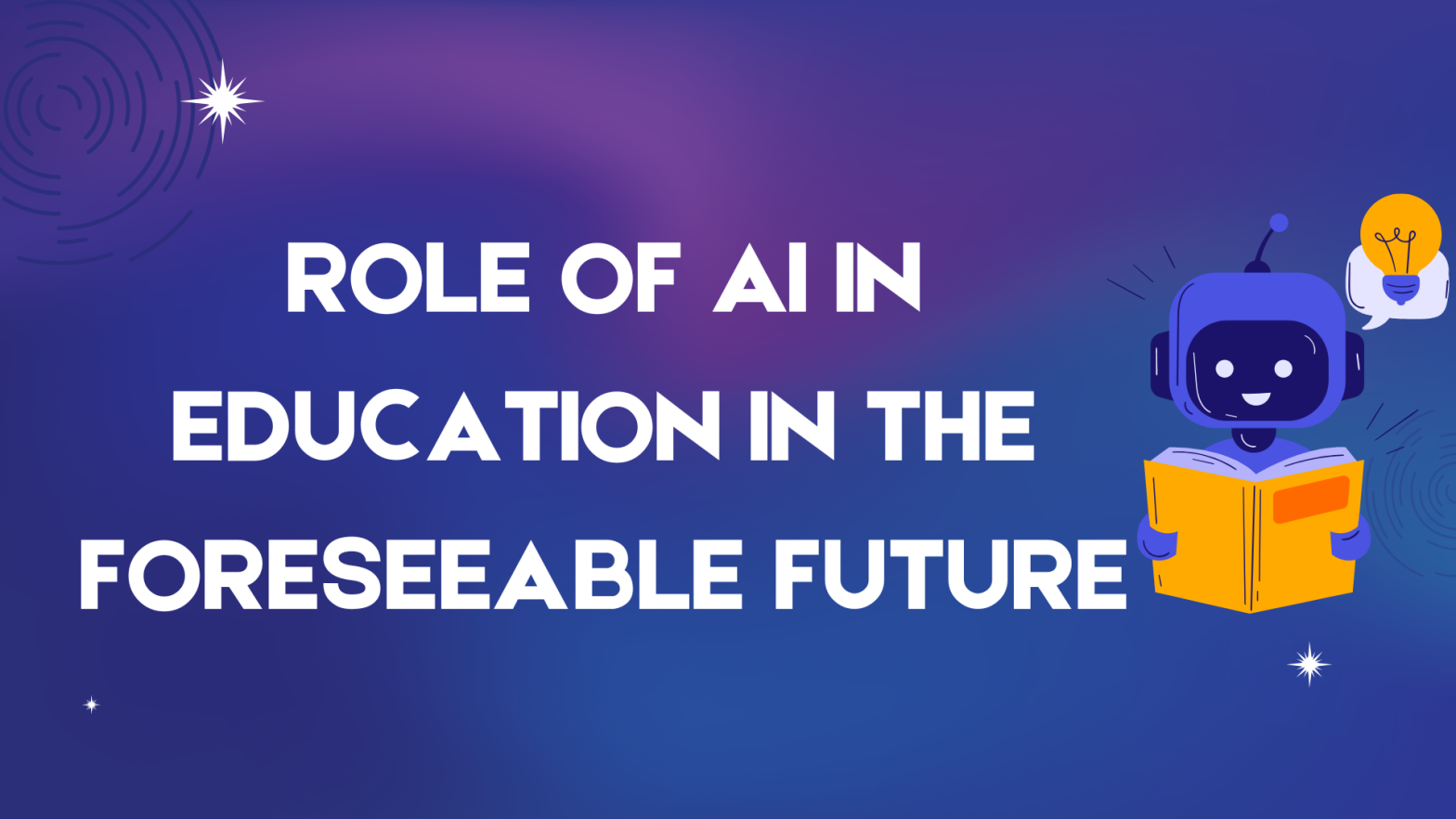
Imagine historic figures teaching the student a history lesson. For instance, how would it feel to have Rabindranath Tagore giving students a lecture in literature or Khudiram Bose giving a lesson in history? With the direction that the role of AI in education is taking, this could become a possibility in the near future.
Global adaptation of new technology is changing the way students are learning. One such technology is artificial intelligence (AI). With the advent of ChatGPT by the end of 2022, AI was introduced for all internet users and our tech evolution has expedited ever since. It is transforming the education sector which is set for massive upgrades over the next decade. Let us understand what is the role of AI in education for the foreseeable future.
Schools and universities are already accepting AI in their curriculum. Educational institutions are utilizing AI in administrative tasks, as well as for online and offline learning. The role of AI in education is shaping the way teachers teach and students learn.
AI is not something that showed up overnight on our phones and computers. It has been a work in progress for a long time now, with features such as auto-correct, chatbots, search recommendations, and digital payments, among others.
AI has helped humans perform complex tasks digitally in less than half the time than if people were to do it manually. AI improves cybersecurity, adds intelligence, takes on a large volume of work, and also supports natural language processing.
When it comes to the role of AI in Education, it helps in better communication between students and teachers and offers real-time feedback. AI saves time and creates a flexible environment for learning. It supports remote learning, addresses skill gaps effectively, and provides assistance 24/7 through chatbots.
Children must be taught AI as a subject, as it is the way of the future. Thanks to CBSE for introducing skill subjects, AI is now an integral part of our curriculum.
Schools affiliated with CBSE have started offering students practical experiences with AI before introducing it in theory. Such practical experiences makes AI relatable for children, rather than simply learning about it in a text-based context.
Here are some ways that the education sector uses AI:
AI can generate digital textbooks, summarize lessons, and create study guides. It can also help the students visualize what they are studying and assist them in learning better. AI also helps keep text time relevant, as a lot of information needs to be constantly revised.
For instance, history lessons today talk about the coronavirus pandemic that the world faced in 2020. The pandemic was not in books before, and is something that needed to be updated.
Every student had access to the same education in the classroom, irrespective of their learning capabilities. For instance, one student may be faster in grasping new concepts and learning than the other. Parents will then hire a private tutor to ensure that the child who was slower in understanding new concepts is on par with the other students, who are learning quickly.
Now with AI in classrooms, parents can relax knowing that it personalizes study for each child. AI can address the knowledge gap of each child when trained accordingly to make a personalized study plan for them to embark on. It saves parents money on hiring a private tutor. It also gives them peace of mind knowing that their child will have a customized learning experience.
As learning with AI can be personalized, this guarantees that differently abled children have access to education. AI can streamline courses as per their learning abilities and ensure more inclusivity.
The role of AI in education extends to audibly or visually impaired children and ones with any kind of disability to adapt to their needs. AI also aids remote learning in cases where children cannot make their way to classrooms because of their disability.
Tasks such as assessing assignments, grading them, and responding to queries consume a significant amount of time. Therefore, AI can take up these tasks and give teachers more time with their students. They can use the extra time on hand to enhance the quality of education and address more personal queries, which AI may not be able to handle.
Learning is no longer confined to classrooms with the advent of AI. Students can easily have their doubts resolved even outside the school. It is like carrying your teacher with you everywhere you go. Since AI is virtual and occupies no physical space, it accompanies the student wherever needed.
Below are some ways that students have benefited from AI in the education sector:
Students can learn from anywhere at any time with the help of AI. AI on smartphones can fit into their pockets and travel with them anywhere.
Students enjoy a tailor-made approach to learning with AI and find their queries swiftly and accurately addressed. Such a practice ensures that the student is enjoying their academic journey.
As each student experiences personalized attention, they begin to compare themselves less to one another. It allows them to focus on their individual academic journey and thrive.
AI is changing the way education takes place around the world. It supports teachers, creates smart classrooms, and boosts student engagement.
Educational institutions today are accepting AI as a way of the future as they witness the ease AI has brought into everyday functioning.
The way forward in using AI is learning how to balance human and bot, and not to replace teachers with AI completely. There will always be certain situations where teachers will be able to emote better and support the students.
Teachers also need to be trained to implement AI tools better in their classrooms. When trained correctly and used appropriately, AI has the strength to make Indian education powerful.